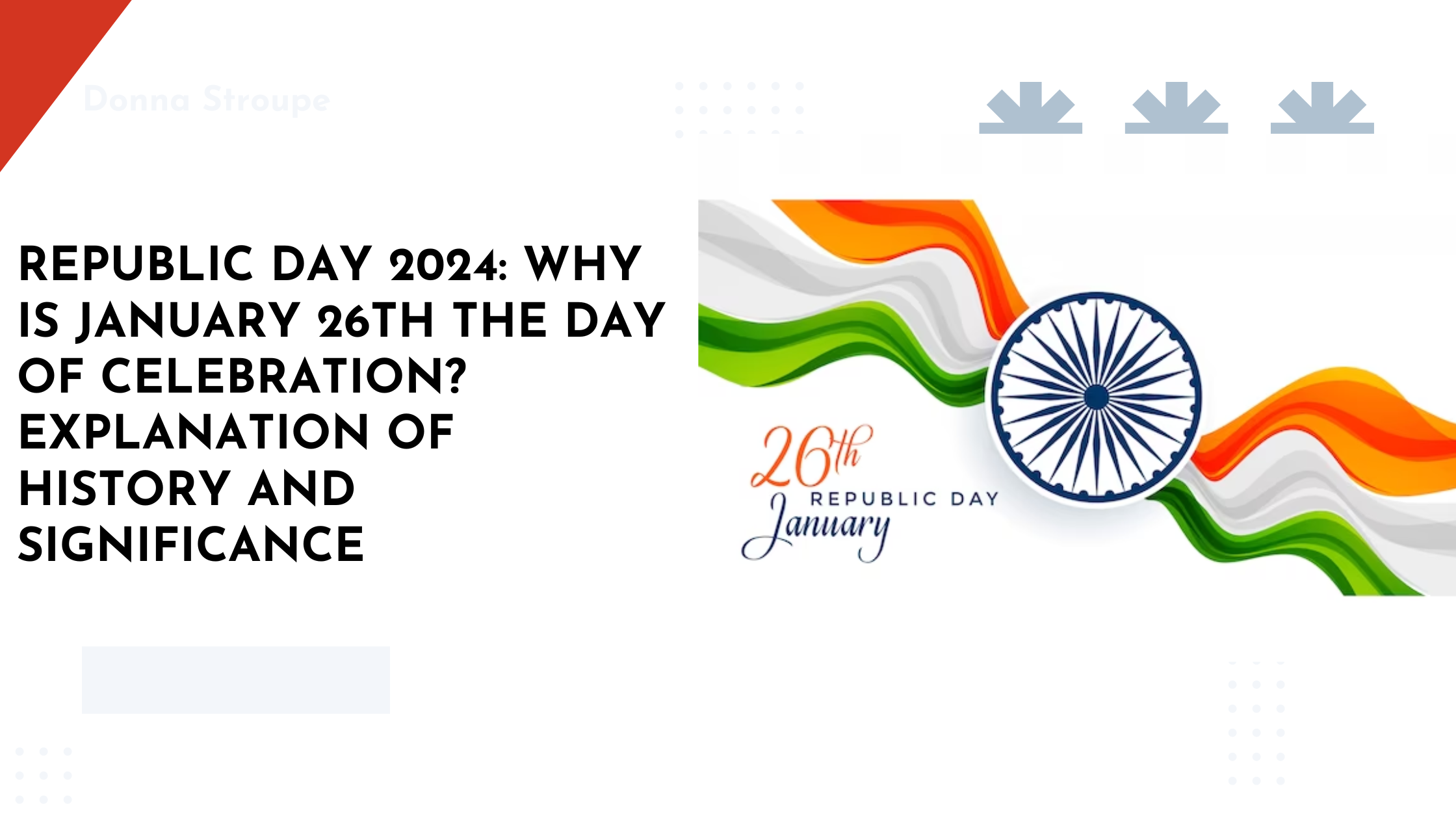
Republic Day 2024: Why is January 26th the day of celebration? Explanation of History and Significance
India will celebrate its 75th Republic Day on Friday, January 26. On this day in history, the nation formally approved its Constitution in 1950, marking a significant milestone.
Themes for this year’s Republic Day Parade at Kartavya Path are “Bharat — Loktantra ki Matruka” and “Viksit Bharat.” French President Emmanuel Macron is scheduled to attend the Republic Day ceremonies as head of state.
Predominantly “women-centric,” the 75th Republic Day events along the majestic Kartavya Path will highlight India’s democracy and its resolve to become a developed nation. First, as stated on Friday by Defense Secretary Giridhar Aramane, the parade would be led by one hundred female musicians performing on Indian musical instruments.
SIGNIFICANCE OF REPUBLIC DAY
The historical process that turned India from a British colony into an independent and democratic republic is what gives Republic Day its significance. On January 26, we celebrate a significant turning point in the history of India’s independence.
India formally became a republic on January 26, 1950, when its constitution was ratified. This event is extremely important since it demonstrates India’s dedication to democratic values.
The first President of India, Dr. Rajendra Prasad, raised the national flag on this day in 1950, signifying the beginning of the Indian Republic. As a national holiday honoring democracy and self-governance, January 26 has been observed ever since.
WHAT MADE JANUARY 26 SELECTED?
The date’s origins can be traced to the period before independence, during when the freedom fighters fought for their country’s independence. The Indian National Congress adopted the resolution for Poorna Swaraj, or total independence, during its 1929 session in Lahore. Congress proclaimed January 26, 1930, as Purna Swaraj Day, or the day of absolute freedom.
Thus, the Indian National Congress, under the leadership of Mahatma Gandhi, proclaimed “Purna Swaraj,” or total independence, on January 26, 1930. This declaration established the foundation for a future governed by the values of democracy and sovereignty and signaled a turning point in India’s struggle for independence.
HISTORY OF REPUBLIC DAY
The body designated to draft India’s Constitution was the Constituent Assembly. On December 9, 1946, it conducted its inaugural meeting, with 207 participants—nine of them were women—in attendance. The legislature started off with 389 members, but on August 15, 1947, following the country’s independence and partition, its membership dwindled to 299 members.
Among the more than 17 committees of the Constituent Assembly was the Drafting Committee, which was chaired by Dr. B.R. Ambedkar. The duty assigned to the Drafting Committee was to draft an Indian constitution. Out of the over 7,600 modifications submitted, the committee eliminated roughly 2,400 during discussion and deliberation on the constitution.
The Constitution was ratified on November 26, 1949, the last day of the Constituent Assembly’s session. But because of the significance of the day, it took effect on January 26, 1950, two months after the 284 members signed it.
WHEN AND WHERE TO WATCH?
The Republic Day Parade can be watched from the stands on Kartavya Path, New Delhi. The tickets can be bought online till 25 January 2024 at the Ministry of Defence’s official website. The total seating capacity at the celebrations will be 77,000 out of which 42,000 seats are being reserved for the general public.
The parade will start at 10:30 hours and run for a duration of approximately 90 minutes. Those interested can tune into it live from the comfort of their homes on state-run channels such as Doordarshan and Sansad TV. Other regional and national news channels will also air the parade live.
Those wanting to stream the parade online can do so through several YouTube channels. Primary among these are the channels of the President of India and the Ministry of Defence.







